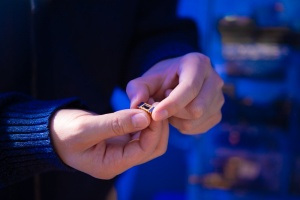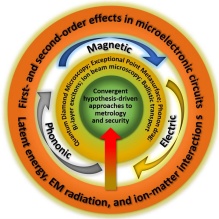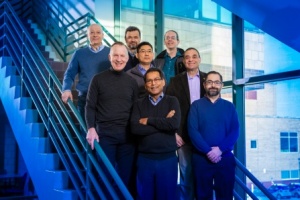
Comprehensive Minimally/non-invasive Multifaceted
Assessment of Nano-/microelectronic Devices (CoMMAND)

Semiconductor chips are the heart of electronic products. Cellphones, computers, tablets, televisions, even washing machines — they all have chips in them made up of complex, miniature circuits. Ensuring these omnipresent microelectronic circuits work properly and are secure is essential for modern life, and can help avoid the malfunction of everything from smartphones to fighter jets.
A research team led by the University at Buffalo will develop new ways to precision test microelectronic circuits. Their goals include increasing understanding of the physical processes that could be used to evaluate chip performance and security, and creating new, ultra-sensitive testing strategies.
The project is funded by a $7.5 million grant from the Air Force Office of Scientific Research through the Department of Defense’s highly competitive Multidisciplinary University Research Initiative (MURI).
Funding Source: Air Force Office of Scientific Research (AFOSR) Multidisciplinary University Research Initiative (MURI)
Award Amount: $7.5 Million
Related UB Departments:
Our researchers will collaborate to investigate magnetic, electronic, phononic, excitonic and ion-matter interactions with state-of-the-art sensing modalities to increase our understanding of the physical processes that could be used to evaluate chip performance and security, and create new, ultra-sensitive testing strategies.
Related News
The project's principal investigator is Paras Prasad, SUNY Distinguished Professor in UB's departments of chemistry, physics, medicine and electrical engineering, and executive director of the Institute for Lasers, Photonics and Biophotonics (ILPB). Co-principal investigators include Jonathan Bird at the University at Buffalo; Katayun Barmak at Columbia University; Alexander Sergienko at Boston University; Ronald L. Walsworth at the University of Maryland; and John Schaibley at the University of Arizona.
UB Team Members
Partner University Researchers
Other Senior Investigators
International Collaborators
Last Modified January 22, 2023




















